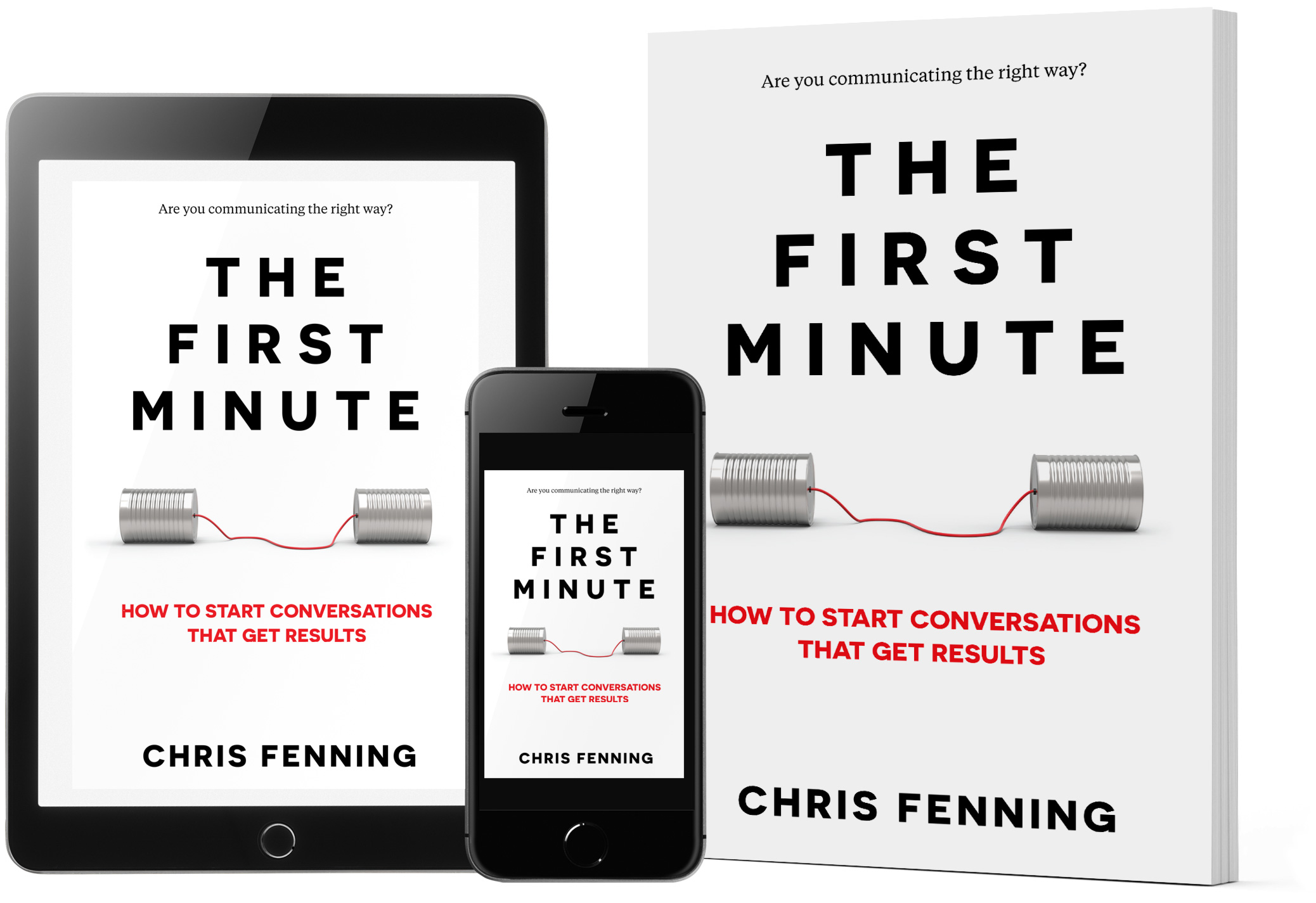One question that came up a few times is ‘Why is the first minute of a conversation so important?’. Of course, you can find out the answer by reading the book — but if you need to know now, here is the answer while you wait for the book to arrive in the mail.
What is the first minute?
In the context of my new book, The First Minute — How to Start Conversations That Get Results, the first minute is not always the start of the interaction with your audience. It does not include the greeting or the time spent on personal engagement. Throughout this book, the first minute refers to the start of the work conversation. The clock starts when you shift from personal to professional topics.
Many books describe how to start conversations that establish and build relationships. Others show you how to make a great first impression in an interview or on a date. Still more show you how to start challenging conversations the right way. What none of those books teach is how to start conversations about everyday work topics.
It is possible to make a great first impression with a colleague, only to ruin that impression when the conversation shifts to work. It doesn’t matter how much people like you; if you cannot deliver information in an organized way, they won’t respect you professionally. This is why the first minute of a conversation is so important.
The first minute starts when you start talking about the work topic.
Why is the first minute important?
The way we communicate at work influences how people think about us. It can impact the opportunities we get or don’t get, and the consequences can be significant. Poor communication skills are one of the top reasons why people don’t get promoted. This is especially true for people applying for leadership positions.
We spend over eight hours at work every weekday. Over 50% of that time is spent communicating either verbally or through writing. That is a lot of time. All those interactions leave either a good or a bad impression about our ability to communicate.
How would you rate your communication skills? Do you leave a good impression, or is there room for improvement?
If you are reading this and thinking it’s too late for you, don’’t despair. You may have had some less than ideal conversations at work, but you can turn it around. You can still become a role model for clear communication.
Research shows that poor first impressions can be reversed by a consistently strong performance. It takes eight good impressions to overturn a bad one. That may sound like a lot, but we have so many interactions at work that it doesn’t take long to have eight conversations.
For example, if you have one conversation every day, you can go from being seen as a poor communicator to a great one in less than two weeks. When you factor in emails and meetings, the number of times you communicate with someone each day goes up. The turnaround time for eight conversations is even shorter.
What would you give to go from a poor or average communicator to a great communicator in just eight conversations?
Plus, while you may have some work to do to change the impressions of the people you work with, there are many more chances to give first impressions. New first impressions happen when you meet new people in other teams.
In the book The First Minute, you’ll learn how to create a great first minute. When you apply this to your work conversations, it’ll be a natural part of your of daily communication.
Learn more with my book
The First Minute

My multiple award-winning book is a step-by-step guide for clear, concise communication in everyday work conversations.
Being concise is not about trying to condense all the information into 60 seconds. It’s about having clear intent, talking about one topic at a time, and focusing on solutions instead of dwelling on problems.
Throughout this book you’ll discover how to:
- Have shorter, better work conversations and meetings
- Get to the point faster without rambling or going off on tangents
- Lead your audience toward the solution you need
- Apply one technique to almost every discussion, email, presentation and interview with great results
